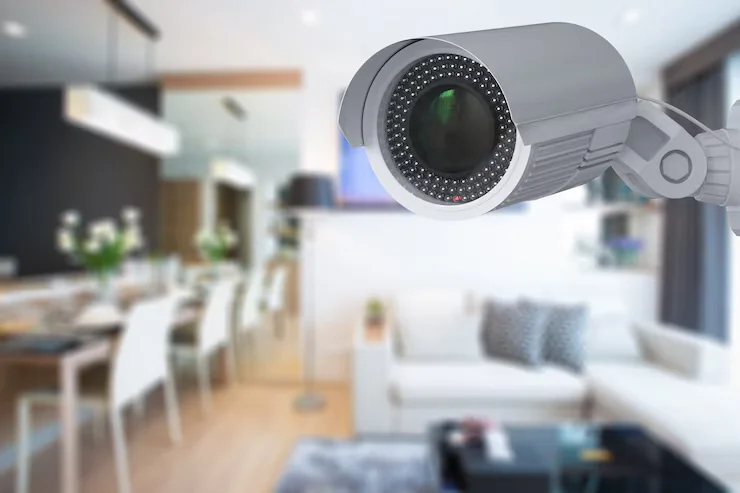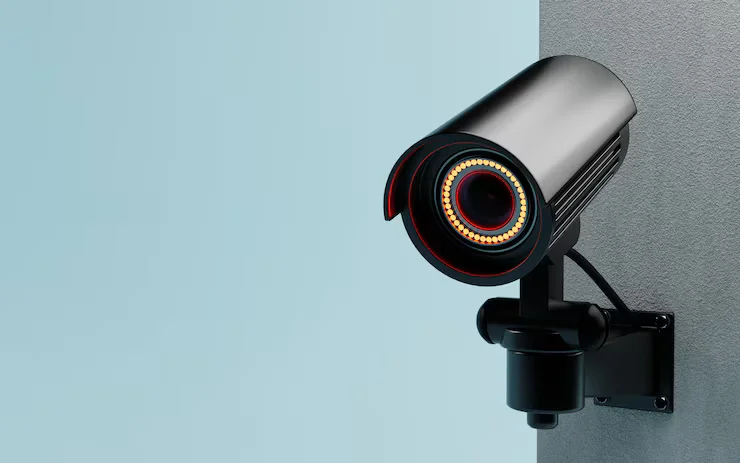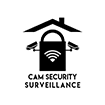When it comes to protecting your property, one of the most common questions people ask is: how many security cameras do I need? Whether you’re securing a home, office, or retail space, getting the right number of cameras is crucial. Too few, and you leave blind spots. Too many, and you waste money and resources.
In this guide, we’ll help you figure out the right number of cameras for your specific property needs, break down the essentials of security cameras in the home, and explain how CCTV camera number decisions vary depending on the size, layout, and security priorities of your space.
Why Camera Count Matters for Effective Surveillance

The number of cameras directly affects the efficiency of your surveillance system. If you’re wondering, “how many CCTV cameras do I need?” the answer isn’t a fixed number. It depends on several key factors:
- Size of the property
- Number of entry points
- Type of security coverage (indoor, outdoor, 24/7, motion-triggered)
- Level of detail you want in your footage
- Budget for installation and maintenance
The goal is to ensure complete coverage without overlap or missed zones. That’s where strategic planning becomes essential.
Main Considerations When Deciding How Many Cameras You Need
Choosing how many cameras depends on a mix of technical and practical elements. Here’s how to assess your needs:
1. Property Layout and Square Footage
Bigger properties require more coverage. A small apartment may need just two or three security cameras in the home, while a large home or commercial building might require 10+ cameras. Remember, the CCTV camera number must align with the complexity of the layout, especially if there are multiple floors or outdoor areas.
2. Entry and Exit Points
You should place cameras at every entry point: front and back doors, garage doors, and even windows if accessible from the ground floor. This alone can dictate how many CCTV cameras do I need to monitor all potential vulnerabilities.
3. High-Traffic Areas Inside the Property
Install security cameras in the home to monitor common indoor spaces such as living rooms, hallways, and staircases. These areas often become critical paths in the event of a break-in or other incident.
4. Outdoor Spaces and Perimeter Coverage
If you have a yard, parking area, or alleyways, adding outdoor cameras is essential. This increases the CCTV camera number needed and requires weather-resistant models with night vision.
Example Camera Setups by Property Type
To help you get a better sense of how many cameras might be right for your space, here are example configurations:
For Apartments:
- Front Door Camera
- Living Room Camera
- Hallway or Entryway Camera
Total: 3 cameras
For Single-Family Homes:
- Front and Back Door Cameras
- Driveway or Garage Camera
- Living Room and Hallway Cameras
- Optional Side Yard Camera
Total: 4–7 cameras
For Large Homes or Commercial Properties:
- All main doors and windows
- Perimeter coverage (fence line or parking lot)
- Common indoor areas
- Office spaces and storerooms
Total: 8–16+ cameras
Depending on your security goals, your CCTV camera number may vary—but it’s better to overestimate than leave blind spots.
Indoor vs. Outdoor Cameras: Do You Need Both?
Yes, and here’s why.
- Indoor cameras offer insight into what’s happening inside your home security system indianapolis or business.
- Outdoor cameras deter threats before they even reach your door.
When considering how many CCTV cameras do I need, don’t forget to balance between indoor and outdoor surveillance.
Technology Features That Affect Camera Quantity
Not all cameras are created equal—especially when planning a home security system in Indianapolis. The more advanced your camera features, the fewer units you may need to effectively cover your property. For instance, wide-angle lenses help monitor larger areas with fewer cameras, while PTZ (Pan-Tilt-Zoom) models let you adjust views remotely for flexible surveillance. Motion detection technology ensures your system records only when it matters, reducing unnecessary footage. And with 4K resolution, you’ll capture every detail clearly—allowing fewer cameras to do more. Choosing the right setup can significantly influence how many cameras you need, making your home security system Indianapolis more efficient and cost-effective.
- Wide-angle lenses: Cover more ground with fewer cameras.
- PTZ (Pan-Tilt-Zoom) cameras: Adjust and zoom for flexible viewing.
- Motion detection: Only records when movement is detected, reducing footage clutter.
- 4K resolution: Captures clear detail, allowing wider coverage areas.
Choosing the right camera system can significantly impact how many cameras you’ll end up needing.
You can aslo read about: security camera for apartment
How to Plan Your Security Camera System

Use these steps to plan effectively:
- Sketch your property layout – Highlight entry points, vulnerable zones, and high-traffic areas.
- Mark coverage areas – Ensure cameras don’t overlap unnecessarily.
- Choose camera types – Dome, bullet, PTZ, or wireless based on where they’ll be placed.
- Decide on storage needs – More cameras = more video data. Opt for systems with DVR/NVR or cloud storage.
This approach will help you answer your own question: how many security cameras do I need? Or more specifically: “how many CCTV cameras do I need for my property?”
Mistakes to Avoid When Estimating CCTV Camera Number
- Ignoring blind spots – Every corner not covered is a vulnerability.
- Underestimating indoor needs – Intruders may move inside fast.
- Overlapping views unnecessarily – Wastes storage and resources.
- Neglecting storage planning – The more cameras, the more you need to store and review.
Final Thoughts
When asking how many security cameras do I need, it’s not about choosing a random number but ensuring smart, complete coverage. Consider whether all entry points are secured, if key indoor areas are monitored, and whether you have both indoor and outdoor visibility. These questions help determine the right CCTV camera number for your home or business. Whether you’re wondering how many CCTV cameras do I need for a small space or a larger property, the right number of cameras depends on your layout and security goals. If you’re unsure how many cameras to install, Cam Security Surveillance can provide a professional assessment and deliver a customized security solution to ensure your property is fully protected.
FAQs
1. How many security cameras do I need for my home?
The number of cameras you need depends on your home’s size, layout, and entry points. Most homes need 4–6 security cameras in the home for full coverage.
2. How many CCTV cameras do I need for a small apartment?
For a small apartment, 2–3 cameras usually suffice. Ask yourself, how many CCTV cameras do I need to monitor the front door, hallway, and living area.
3. What’s the ideal number of cameras for outdoor surveillance?
It depends on the size of your yard and how many access points there are. The right CCTV camera number ensures you don’t leave blind spots outside.
4. Can one camera cover multiple areas?
Yes, but it depends on the camera type. Wide-angle and PTZ models can reduce the number of cameras needed while still offering full coverage.








